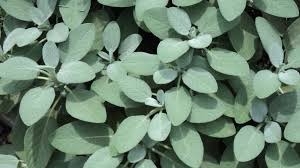Gardeners know that the old saying “location, location, location” doesn't just apply to real estate. As the local Farm Advisor, Dustin Blakey always stresses, put the right plant in the right spot. But what if you live in Chalfant. It doesn't really seem to be the right spot for anything! Next time you're driving out Highway 6—maybe for a great burger at The Merc—notice the native vegetation. Not far past Laws the sagebrush disappears. By the time you're coming down the hill toward Chalfant, even the rabbitbrush has deserted you, and aside from the relative lushness of the occasional saltbush you're faced with a lot of things that pretty much look dead, so it's hard to say just what they are.

Last time I wrote about one of my top ten favorite shrubs, California coffeeberry (Frangula californica). When it comes to flowers, there is no contest for the winner in my neighborhood—the entire Salvia genus. If I were going for my yard's top ten flowers, maybe three of them would be salvias. I had two or three species when I lived in town, but I never really appreciated the diversity of the genus until I moved out here, where Salvias seem to succeed where others struggle. When I picture the star performers in Bishop, I'm thinking things like Rudbeckia and Echinacea. Why they thrive there, yet not here, I'm not sure, but salvias don't struggle, even in my yard, and nothing attracts more creatures. From before dawn until after sunset, from April through October, there are always hummingbirds in my yard.
Here in the Owens Valley, most of the salvias we are familiar with require relatively little water, so it is easy for us to forget that salvia is the largest genus of the mint family Lamiaceae—plants that normally like wet conditions. Salvias do vary with their water needs, and some are bog plants, but most are relatively un-thirsty and all require well-drained soil. Of more concern to us is cold tolerance. Nearly any salvia will grow well here in the summer, but many are tender perennials. Salvia leucantha (Mexican bush sage), for example, is one that is big and beautiful in summer, and though I had some success with them overwintering in Big Pine, Chalfant is a bit too rugged for that one. Like another beautiful sage that is widely available in our area, Salvia guaranitica ‘Black and Blue,' it is rated zones 8-10, so if you're in the southern end of the valley, you might be able to count on a return performance next year; the farther north you travel, the more you'll have to be content with buying new plants every year. By the way, the American Horticulture Society has good gardening maps at http://www.ahs.org/gardening-resources/gardening-maps and our own website has great local info at http://ucanr.edu/sites/mginyomono/Resources/Climate/. As long as we're looking at external sources, here's another one of interest: a list of all the known species of Salvia!

Sage has one of the longest histories of any of the useful herbs, and the essential oils of another, clary sage (Salvia sclarea), are widely used in aromatherapy, perfumes and liqueurs. It's interesting and easy to grow from seed, but somewhat rank. Fortunately, there are lots more interesting choices and we'll get to them next time.